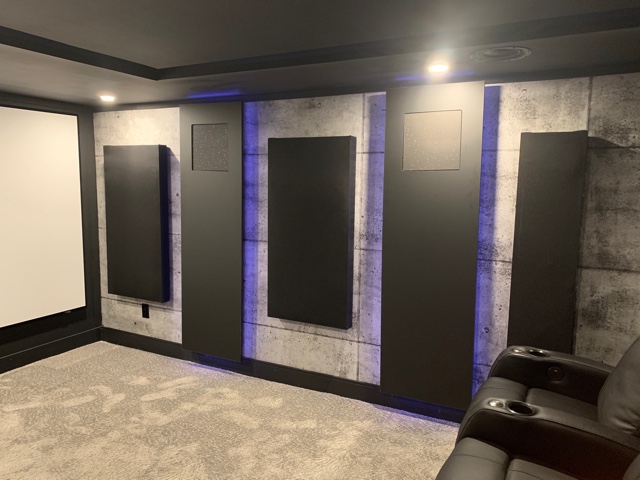Air Gaps and Acoustic Panels – Why and How Much
You’ve heard about air gaps and acoustic panels but they don’t make much sense to you. Why would you want to leave an air gap when you could fill that gap with more sound-absorbing material? It doesn’t compute! Let’s discuss!
It’s All About the Money
Around here (and many places online), people are looking for advice to save money. They want to know how to best stretch their dollar. With acoustic panels, the vast majority of the cost is in the materials. If you can reduce the amount of insulation and the size of the frame, you reduce the total cost. You can see that on any site that sells preassembled panels. The thicker the panel, the greater the cost.
The conventional wisdom is that including an air gap (space between the back of your acoustic panel and the wall) will increase its effectiveness. How much? Let’s look at the data.

Above are two different measurements for different thicknesses of Owens Corning 701 Rigid Fiberglass Insulation. The difference between the two measurements at each thickness is the mounting option. The first of the two will have the panel mounted directly on the wall. The second leaves a ridiculously large 16-inch air gap.
As a side note, research has shown that a gap should be about the same thickness as the original absorptive material. A 1″ panel should have a 1″ gap, a 2″ panel and 2″ gap, and so on. We’d link up the research, but it is all behind paywalls.
What The Data Means
When we look at the numbers, we must remember that they represent the percentage of sound absorbed at each frequency. As a rule of thumb, any percentage above 75% is considered a “good” absorber. If we take the first two lines and look at the 4kHz volume (labeled 4000Hz here), we see that with no air gap, we get a 92% absorption of sound. With the air gap, you find 100% of sound absorbed (yes, the number is slightly higher than 100% but don’t worry about that).
Of course, the difference between 92% and 100% is not that great. As you move to the left of the columns, you reach the lower frequencies where the bass lives. Here we see much more substantive changes. In the 1″ panel, we see an increase from 33% to 85% at 250Hz. With the 2″ panel, we see 67% to 100%.
As we get thicker, we note that the differences don’t seem that great. At 4″ we only see a change from 73% to 87% at 125Hz. The air gap with the 4″ acoustic panel doesn’t seem to be doing much. Does that mean that thicker acoustic panels don’t need an air gap?
Where the Air Gap Becomes Important
To address the previous question, the answer lies in the limited data we have on hand. We have very specific data points (the frequencies measured) and they stop at 125Hz. What we’ve seen is that, as you add an air gap, an acoustic panel gets more effective at lower frequencies. What we are not seeing here is lower measurements. These would show that the air gap is indeed helping at those frequencies with those thicker panels.
But when we compare no air gap to air gap between the different panel thicknesses, we see that adding that air gap makes a thinner panel just as effective (if not more so) than a thicker panel. This means you can save money by buying the thinner acoustic panel and adding the air gap to increase its performance.

The Real Cost of the Air Gap
Of course, adding an air gap makes hanging your acoustic panels slightly more difficult. But the real cost is in the space lost. People struggle to integrate acoustic panels into their rooms. Buying the thinner panel should translate into space savings that can make adding panels to your room more palatable. The air gap takes away those space savings.
Take Away
The reality is that any acoustic panel hung with or without an air gap is better than nothing. If you can’t add an air gap, we highly recommend you don’t skip panels altogether. They are so important for making your room sound better that this is a perfect example where doing something slightly less than optimally is better than not doing it at all.



Good job Tom.
Easy to understand, great for making adjustments to existing listening environments.